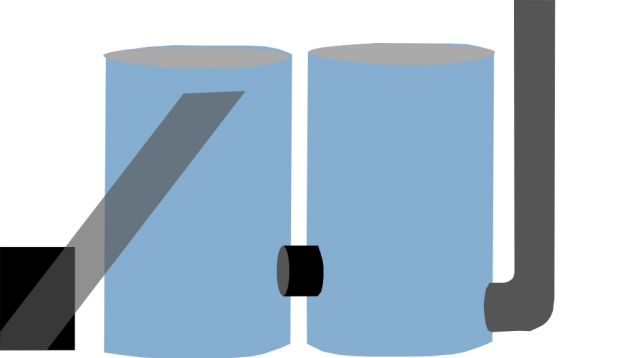Post by matthewwalker on Dec 18, 2013 19:10:47 GMT -8
I've been interested in building cook top height rockets for a while now, and recently had an accidental discovery that opened up some new options for me in this regard, using fairly standard known working rocket proportions, with a little twist.
First, a little back story on how I discovered this. In the weeks running up to the Decathlon in DC last month, I was burning my Walker Stove daily. Sometimes inside, sometimes outside, to test various chimneys and the like. In the course of doing that, I was moving it around a bunch. Well, one night, after burning it outdoors that day, I moved it back indoors and lit it up to warm up the house. It was running just perfectly, and I went about my business. I came back into the room after a couple loads and as was my usual habit I pointed the IR gun at the surrounding combustibles to make sure I wasn't getting anything too hot, since I just kinda rigged up a place to burn the thing so I could test it. To my surprise, the ceiling, which usually was my foremost area of concern, was not hot at all. Weirder still, as I got near the stove, it was throwing a TON of heat off the front, which usually was the coolest part of the radiator. I pointed my IR gun at the top of the stove, and it was less than half of what I should have seen there. Pointed it at the front, and it was 900°f+! I pretty quickly figured out what happened, but what was surprising was that the stove was running so well.
The riser had fallen over inside the radiator! And it still worked! I was excited, but it's taken me this long to get back into the swing of building test stoves and such and verify that this works. Well, it does, for sure. What this does is offer a whole slew of new options for shape/size/configuration of these stoves. By not having to set the first radiator on top of the core, you can save a bunch of height. In that way, it's a great solution for cook top height stoves. So far I've tested what I call the "broken riser," which replicates what happened inside my stove. I still make the core with the initial 12" high riser stub, then form an angled flange on top of that to mate the riser to. I tested one with about a 20° angle, and I've tested one that is almost horizontal. Both worked great, a little harder to start than normal, but once going they draw wonderfully.
I haven't built the "angled riser" version, but I suspect it's even better. I'll try that next. Here's a couple quick drawings of the concept. In both cases I drew it as a double barrel bell system, but I think they would work with a variety of configurations. It doesn't seem to act any different than a regular J with a vertical riser.
Broken Riser

Angled Riser

First, a little back story on how I discovered this. In the weeks running up to the Decathlon in DC last month, I was burning my Walker Stove daily. Sometimes inside, sometimes outside, to test various chimneys and the like. In the course of doing that, I was moving it around a bunch. Well, one night, after burning it outdoors that day, I moved it back indoors and lit it up to warm up the house. It was running just perfectly, and I went about my business. I came back into the room after a couple loads and as was my usual habit I pointed the IR gun at the surrounding combustibles to make sure I wasn't getting anything too hot, since I just kinda rigged up a place to burn the thing so I could test it. To my surprise, the ceiling, which usually was my foremost area of concern, was not hot at all. Weirder still, as I got near the stove, it was throwing a TON of heat off the front, which usually was the coolest part of the radiator. I pointed my IR gun at the top of the stove, and it was less than half of what I should have seen there. Pointed it at the front, and it was 900°f+! I pretty quickly figured out what happened, but what was surprising was that the stove was running so well.
The riser had fallen over inside the radiator! And it still worked! I was excited, but it's taken me this long to get back into the swing of building test stoves and such and verify that this works. Well, it does, for sure. What this does is offer a whole slew of new options for shape/size/configuration of these stoves. By not having to set the first radiator on top of the core, you can save a bunch of height. In that way, it's a great solution for cook top height stoves. So far I've tested what I call the "broken riser," which replicates what happened inside my stove. I still make the core with the initial 12" high riser stub, then form an angled flange on top of that to mate the riser to. I tested one with about a 20° angle, and I've tested one that is almost horizontal. Both worked great, a little harder to start than normal, but once going they draw wonderfully.
I haven't built the "angled riser" version, but I suspect it's even better. I'll try that next. Here's a couple quick drawings of the concept. In both cases I drew it as a double barrel bell system, but I think they would work with a variety of configurations. It doesn't seem to act any different than a regular J with a vertical riser.
Broken Riser

Angled Riser





